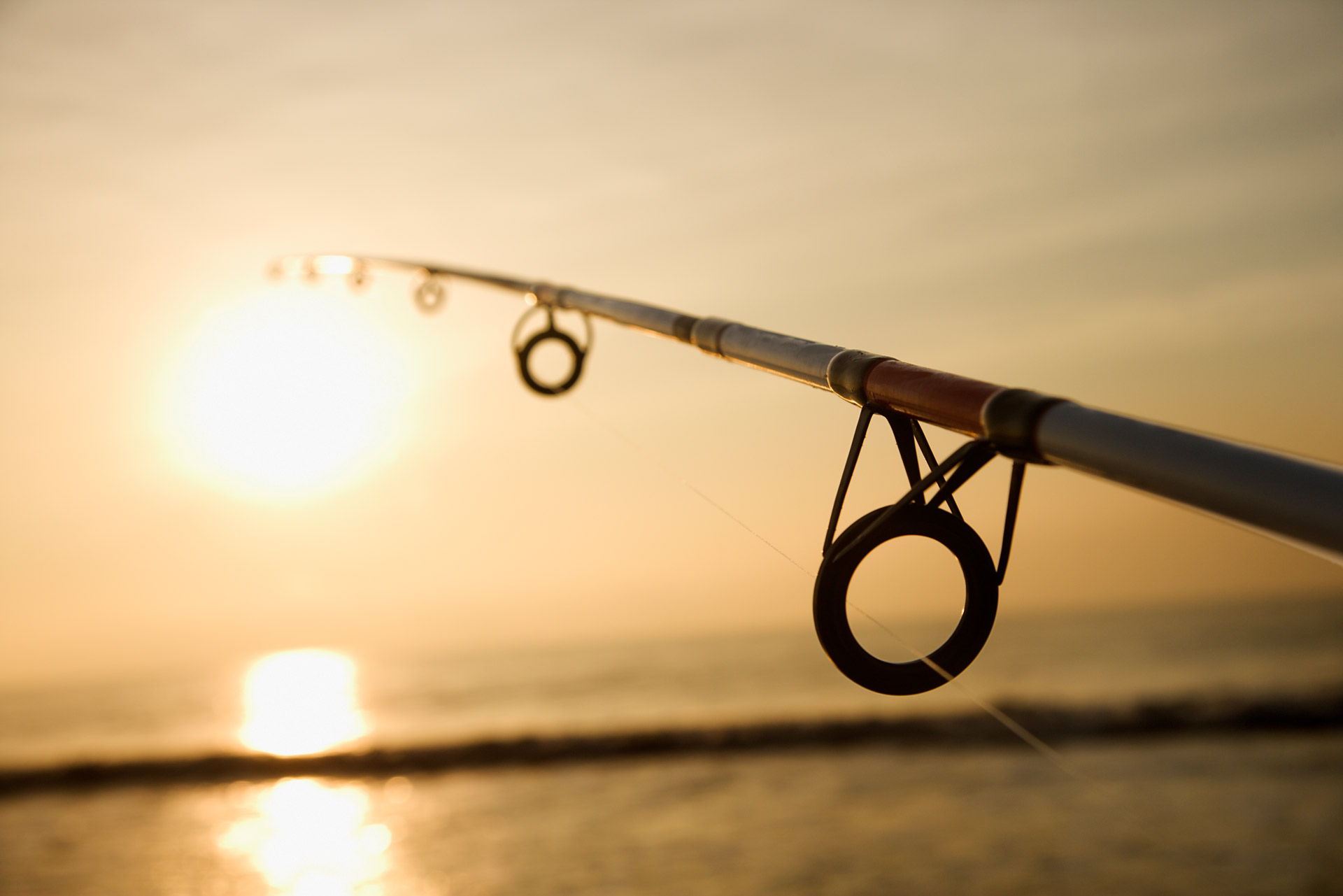Fly Fishing for Bass - Awesome Bass Fishing Tips
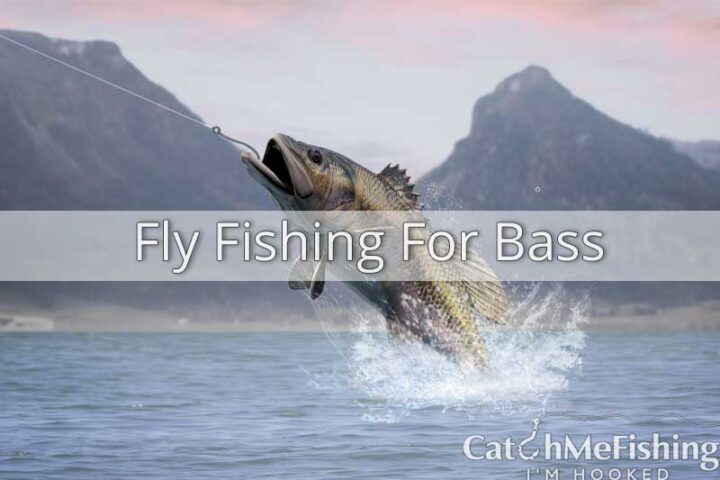
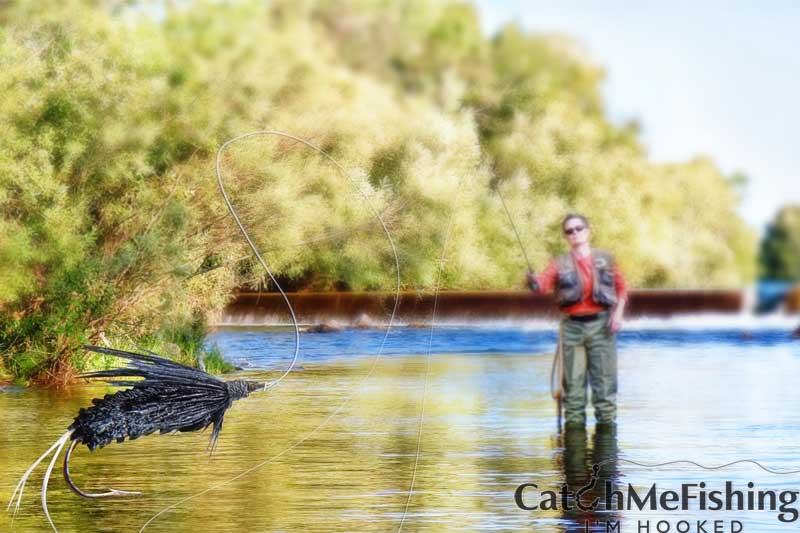
Introduction
The more traditional rod and line methods can be difficult enough to capture bass from the shore, so why bother making it more difficult by attempting to catch them on the fly rod?
The belief that bass can be caught on flies from the UK shoreline is increasingly influenced at home by TV, DVD, internet and print media. It appears that there is some shift in angling activity towards saltwater fly fishing and consequential development of specialist guiding services. For a very long time, of course, it has been understood that bass make good targets for fly fishing.
Also now, some of these myths are implicitly enforced by media articles explicitly referring to fly fishing for bass. The most popular are the catching of smaller fish (usually by advocating fishing in calmer estuarine style locations where population structure may be dominated by aggregations of smaller fish) and that bass are only worth pursuing with the fly under particular conditions, such as when attacking bait fish can be seen.
Over the next few pages, I hope that I can convey useful information that will dispel some of these myths and allow the reader to gain a basic understanding of the requirements for starting bass fly fishing or to strengthen the understanding of those who have already begun but want to gain more knowledge about flying fishing bass.
The Places and the Times
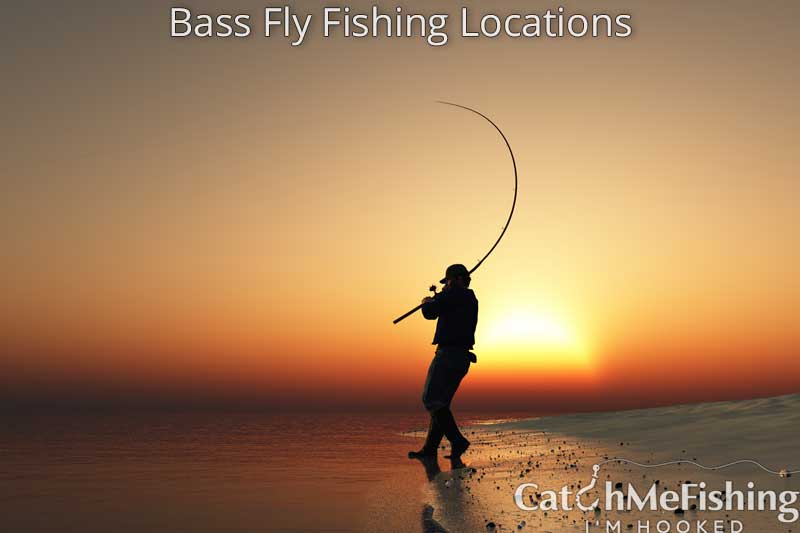
As in all types of angling the most important aspect to the sport is to locate the fish or at least locations that bass are likely to visit. In this way, lure or bait fishing is no different from fly fishing. You can fly surfing, rough terrain, deep gullies, deep inshore drop-offs, sand bars, rips or virtually all areas where bass can feed while wading or fishing from the shore. The position of fish is a matter in its own right and deserves its own separate article and will not be discussed in depth here, but I would like to lay emphasis on a few issues regarding to places and times:
-
Season
I have a self-imposed bass fly fishing window for my home waters of North Wales that begins in May and finishes in October. In the main, the best average return for effort applied is given by July August and September, but subject to one's personal willingness to spend increased effort for potentially reduced returns, fish can be caught regularly in May, June and most definitely in the months of October.
This does not mean that, outside of these months in North Wales, you can not catch bass on the fly fishing. The more south you hunt in the UK, the longer the successful opportunity window you get for bass fly fishing, so that the south coast can provide practical opportunities for all but the first few months of the year.
-
Coloured Water
The more coloured the water, the less productive I think fly fishing is for bass, and in reduced visibility conditions I would switch position instead of wasting effort. Wind, heavy rain run-off, wave activity, water depth, tidal flow, and form of sea bed substrate can all affect water clarity at certain times of the year, as can heavy algal blooms. If shallow areas retain cloudy water, then during high wind cycles, search for deeper water with a clear rock substratum or shorelines within the lee. Then try more brightly coloured flies or black flies to enhance visual location if any colour is present but not enough to change location and try fishing them slightly slower than for clean water.
-
Fish Close-in
It seems to make sense from the first point of view to suggest that the more water you can cover with your bait or lure, the more chance you have of succeeding. You then come to the conclusion that the more water you can cover that includes bass, the more success you can have, if you analyse this more profoundly. Everybody is aware of the fact that you are mainly limited to fishing within 30 metres of your rod top with fly fishing and maybe 10 or 20 metres if conditions are poor, you use very big flies or your casting capacity has not been completely established yet.
Then, the aim of bass fly fishing is to find shorelines that are likely to hold bass within your casting reach. Fortunately, one of the most convenient aspects of bass behaviour is that some have a pre-disposition to follow the shoreline as they travel and to be attracted to the 'structure' of the shore that can be reached with or without the assistance of wading, but most often between high and low water levels within the littoral zone of the shore. The structure offers bass food environments and/or areas where bass can ambush bass. Structure can take several forms in an environment of lesser characteristics, from boulders to sand bars and troughs to rock gullies or patches of rough terrain. These areas include a 'difference' in simplified terms against a more even context and new entrants to the sport will not go far wrong by first searching for these features as places to start fishing within their casting range.
Alternatively, when going between different feeding sites, one might search out 'pinch points' on the shoreline where bass can be concentrated on. Such 'pinch points' are created by rocky points and gullies between bays or sand bars. The fly fisher would fish for a selected duration of tidal range at these locations and try to tempt passing bass that were supposed to travel around or through the target area.
-
Light Levels
In shallow water places, especially where there is no ability for bass to flee into nearby deep water, bright, overhead sunlight will prevent bass from venturing into too shallow water, say less than 1 m deep. Bass are more secure in going into very shallow areas on overcast days or when the sun is lower on the horizon. It can actually travel very close to shore during darkness or before the sun rises over the horizon bass, regardless of the depth of the water as long as they can drive themselves through it. This makes fly fishing during these low light levels extremely productive and most productive during the dark, Although few anglers wish to venture out on the rough ground suitable for bass at night or have actually established the faith that in the dark they can catch bass on the fly. I thoroughly understand the aesthetic enjoyment of seeing the fly line unfold, of seeing the bass strike the fly, and of landing the silver bar in the sunshine, made even more enjoyable by the relation you have with the water anytime you are wading. More and bigger fish Would, however, be closer at night and open to the fly fisherman.
7 Basic Fly Fishing Steps For Beginners
Equipment and Flies
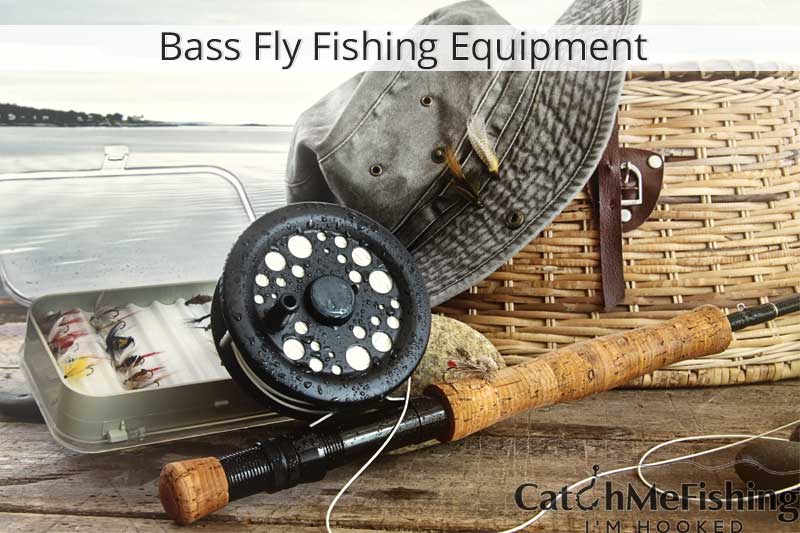
The first is from sea anglers who may want to pursue fly fishing along with their lure fishing, and the second is from the freshwater game fishing industry when salmon or trout anglers are trying to extend their horizons. There are two key routes to take up saltwater fly fishing for bass in the UK and USA. It is relatively easy for those with current freshwater fly tackle to at least sample the joys of saltwater fly fishing by using the more durable parts of their freshwater tackle at the end of each saltwater session with proper rinsing. If they want to focus effort on saltwater fish, however, then they may be better served by obtaining tackles specifically made for the rigours of the saltwater environment and built to be able to cast big, voluminous and often heavy flies into strong winds.
Depending on their budget and personal preferences for features and results, anglers transitioning to saltwater fly fishing for the first time have a multitude of saltwater tackle choices available to them. Since tackle choice is such a personal thing that I do not endorse individual products here, I have set out the basic criteria that I think are relevant for the tackle to be used:
-
Rods and Reels
For me, the most important feature of a saltwater fly rod is its ability to throw bulky flies into a powerful wind for use in UK bass flying fisheries. This requirement seems superfluous when conditions are calm and you are trying to present small sand eel fly patterns, Wind will, however, increase very rapidly and a shoal of mackerel or other large bait fish can emerge to take advantage of the situation requiring adequate tackle and large fly patterns. This requirement for me is fulfilled by fast taper, tip action rods. The majority of conditions will be covered by An 8wt, However, if conditions are projected to be very calm, I also fish a 7wt and a 9wt if conditions are extremely rough or I fish deeper water with hard, quick sinking lines and where greater Pollock can also appear.
Particularly in calmer conditions and if not using very large fly patterns on fast taper saltwater lines, robust reservoir trout rods can be successfully used for bass. The initial requirement to buy a particular saltwater rod would be avoided by the use of such a rod before the angler had determined whether saltwater fishing was to be taken more seriously. Here, a word of warning is required about the extreme degree of tackle exposure to physical harm caused by clambering over weedy, slippery rocks, down tiny cliffs, through gullies, etc., and the corrosive nature of salt. After saltwater use, always rinse rods off and ensure salt is not caked in reel seat crevices. When cleaning guides and reel seats, a soft toothbrush is particularly good. When you take up saltwater fly fishing in earnest, prepare to break a rod or two.
Generally, bass are tough fighters and although they often give good account of themselves, they are unlikely to run long distances in fly reel backup. Even, because at close quarters the fly angler tends to hook them, backup is rarely seen. As a result, the highly refined versions do not need to be more appropriate for hot saltwater organisms that can easily run into large quantities of funding. However, the need for reels to be resistant to saltwater corrosion and to be based on rocks is more significant.
Broad arbour reels make life much simpler and can be beneficial when used to capture other running saltwater fish, such as mullets. 100m of backing (saltwater proof) is more than enough to deal with even big bass, but make sure you regularly strip the line from the reel and clean line and reel using a soft toothbrush to clean the ports under a running tap of warm water.
Rod and Reel Choice:
-
Lines and Leaders
Although freshwater lines could be used for occasional saltwater sessions, the small, fast tapered heads that allow larger flies to be fired into strong winds are typically missing. I wouldn't be sure of the durability of these lines either, especially if they were used for surfing. In order to fish, the UK saltwater angler wants coldwater lines. In our seas, warm water, tropical lines go rigid as a board and are comparatively useless. The vast majority of my bass fishing is carried out in water where the water depth is less than 3 m, which can be fished with floating lines. There is little impact on the delicacy of the presentation, especially in windy conditions or when surfing. Good saltwater lines are accessible via the internet and do not cost much, and I tend to buy these lines after a season of heavy abuse and then discard them.
Leaders are one place where I can indulge in a commodity of high quality. For floating lines, 7.5ft or 9ft Knotless Tapered Fluorocarbon leaders are used. I pick 16lb tippet leaders to which I attach about 2 feet of 16lb fluorocarbon tippet, through a loop to loop link. As flies are replaced, the tippet progressively decreases in length and then a new tippet section can be inserted. Difficult, fluorocarbon leaders usually last a season during which time I would have re-tied the terminal loop knot a few times to maintain a stable link with the tippet.
Finally, at which stage I save these highly tapered bits for use on fast sinking tracks, the leader becomes shorter. I didn't find bass to be a shy leader at all and the fluorocarbon is used to help sink a fly through surface layers more for its resilience and nature than for its 'invisible' qualities. When wind speeds are a specific issue and you literally need to get a fly out into the water in the teeth of a gale, the shorter (7.5ft), more tapered leaders are used.
I now suggest only one approach after trying several ways to build line and leader systems. I tie a wide backing loop (using a Bimini twist) and use 2 or 3 nail knots that are lightly coated with UV curing glue to connect a strong braided loop to the reel end of the fly line. The backup is then linked to the fly line by loop. If fish run into the backing carrying the connection via rod guides, this device allows lines to be altered easily and forms a smooth connection. At the leading end of the fly line, this step is repeated, again using a heavy braided loop so that the leader can be connected to the loop link through the loop. As previously mentioned, with the non-slip mono loop knot on leader and tippet, the tippet is attached via loop to loop connection and finally the fly is connected to the tippet, again using a non-slip mono loop knot. This is a very straightforward set-up, has high strength value and has served me well with very strong fish even in tropical conditions.
Lines and Leaders Choice:
-
Flies and Techniques to Fish
Saltwater anglers have more fly patterns available than can possibly be used in many fishing seasons, and although playing with these can be great fun, there is a more critical factor than pattern alone. This factor is how fishing for the pattern is achieved. I primarily use 2 fly patterns, These are sand eel and 'bait fish' patterns that are related to the different ways in which they can be fished in weighted, un-weighted and floating types. In general, most flies are tied on hooks of size 1, 1/0 or 2/0 and the size of the fly is matched to the weight of the rods used and the conditions in which the flies are fished. Weighted flies that fish in the style of 'bend back' (hook pointing upwards) are commonly used when using floating lines, especially in areas with large 'snags' and/or current, with the extra weight allowing the fly to fish at depth as it swings in the flow rather than just below the surface.
Additionally, a sink and draw motion that proves highly desirable to bass can be imparted if fished on a floating line in water from 1m to 4m in depth. By using acceptable line / sink tip combinations in areas of mild or moderate flow, un-weighted flies can be made to 'flutter' at a constant depth and location, just as bait fish can be seen to stay in the current.
At the tip of rocky points or off sand bars where current flow is concentrated and bait fish gather, this technique is particularly helpful.
Using highly buoyant flies on fast sinking lines and short leaders (1.5m) both on sandy, fast sloping beaches and deeper water (>7m) locations usually off steeply sloping rocky shores is a technique we have found to be especially effective. To get the flies down, which are then fished slowly back with the fly floating just above the bottom, very quick sinking lines are needed. In surf-type conditions of lateral water flow, this is also a successful technique where the quick sinking line provides a mechanism to get the fly down without getting swept up and tossed around in the wave action. In these circumstances, takeovers are especially wild, quickly taking up any slack line or bow that may grow with this form of fishing.
-
Accessories
It should go without saying that during the day, the fly angler should always wear polarised sun glasses or safety glasses at night, but this is particularly important for saltwater fly fishing where flies can be large and heavy and unpredictable in wind direction and gusts. I also notice that wearing a hat gives some protection from a weighted fly's clout.



